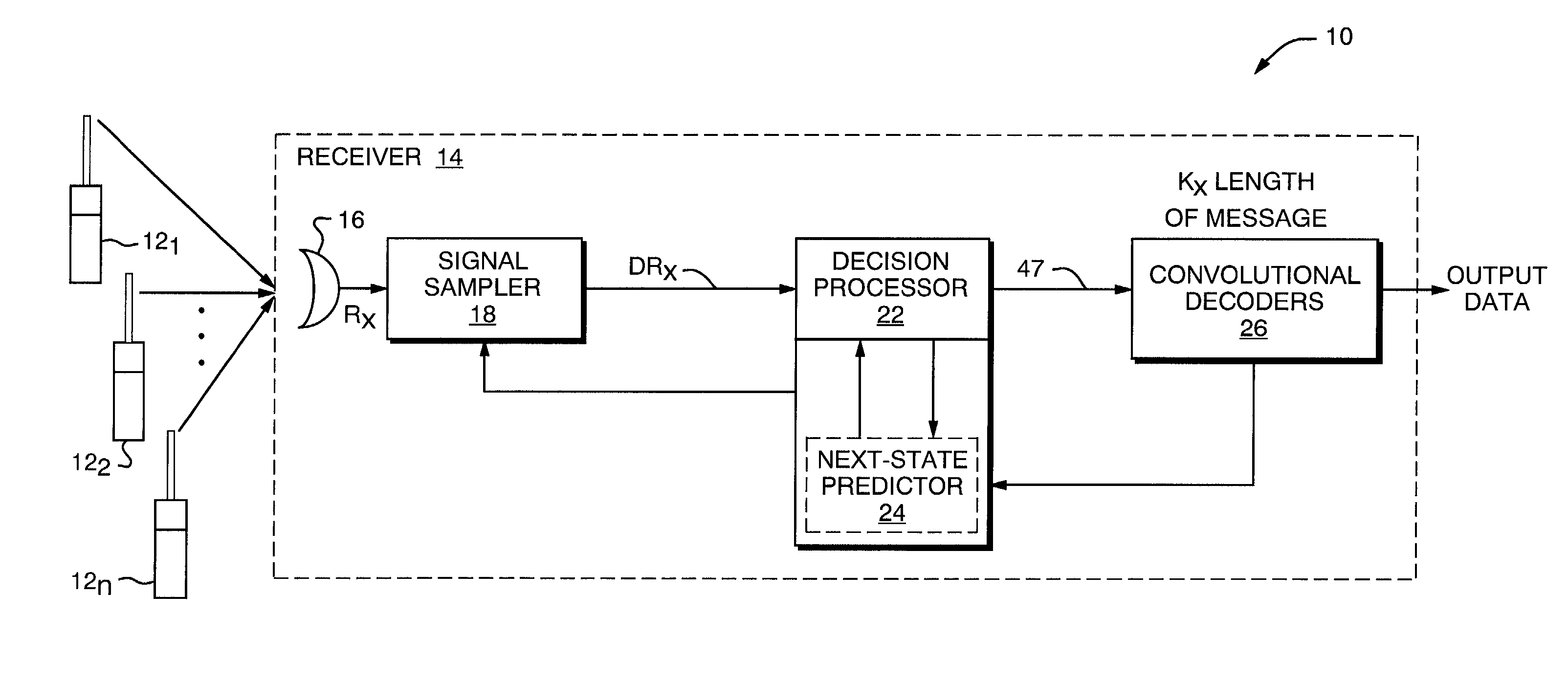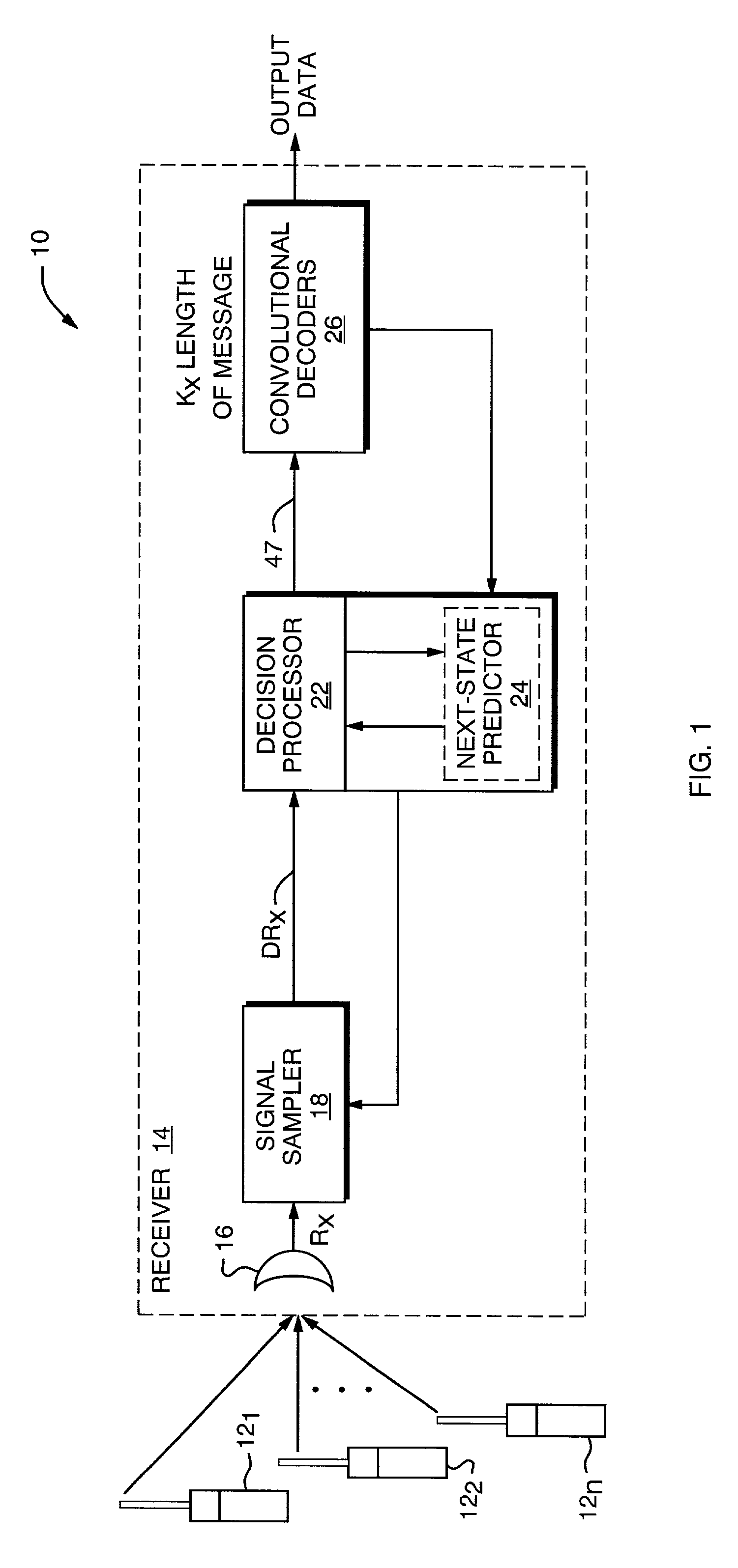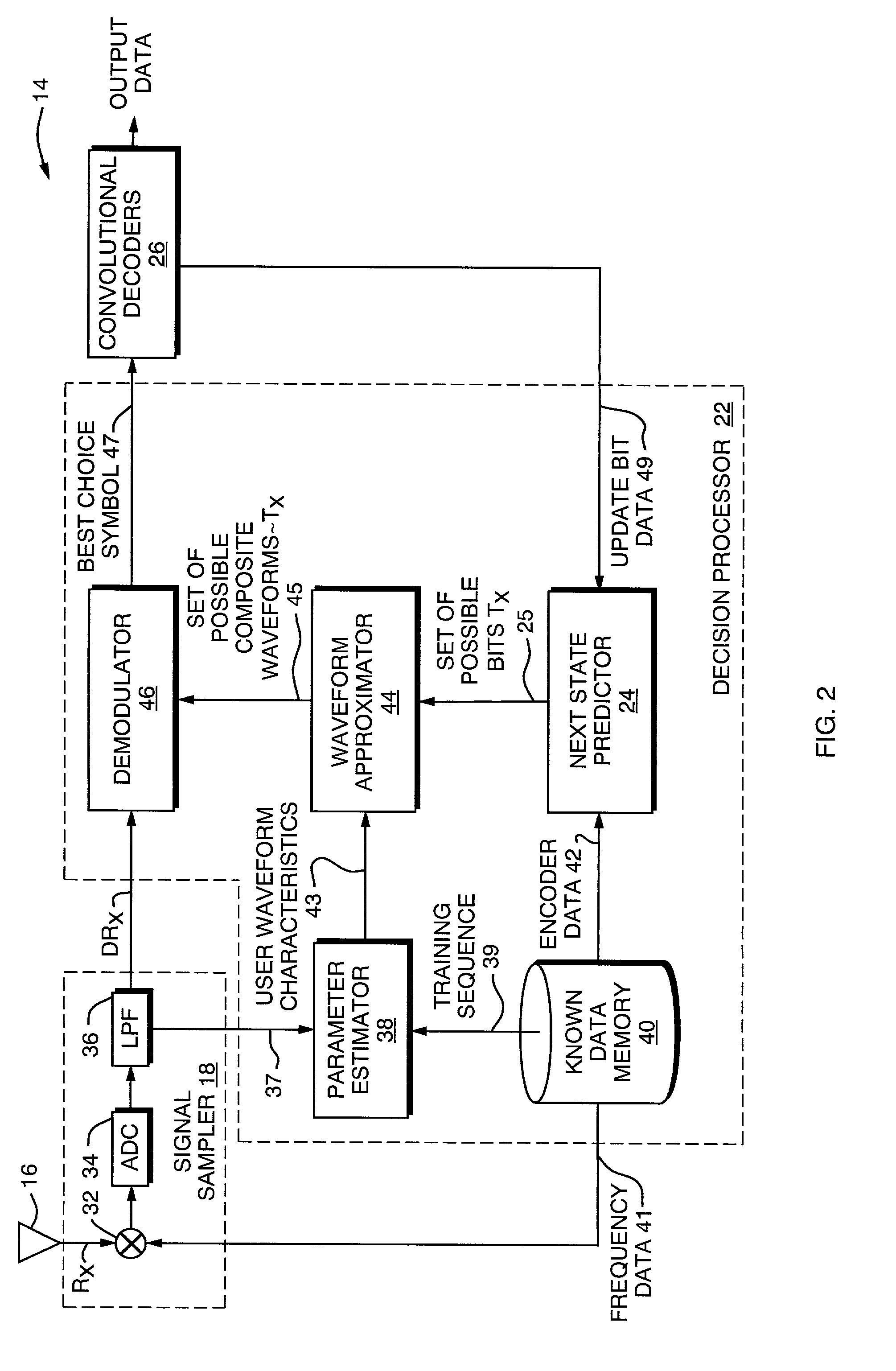Reduced algorithm receiver
a receiver and algorithm technology, applied in the field of multi-user communication system, can solve the problems of high complexity of the system, large system size, and high number of possible signal states to be evaluated by the receiver
- Summary
- Abstract
- Description
- Claims
- Application Information
AI Technical Summary
Benefits of technology
Problems solved by technology
Method used
Image
Examples
Embodiment Construction
[0028] Referring to FIG. 1, a system block diagram is shown of a multi-user communications system 10 which includes a Reduced Algorithm Receiver 14. The Receiver 14 comprises a Signal Sampler 18 which feeds the digitized composite signals DR.sub.x from interfering users to a Decision Processor 22. The Decision Processor 22 converts the detected composite signals to individual user symbols 47 which are sent to Convolution Decoders 26. The Convolutional Decoders 26 decode the individual user symbols to output data bits.
[0029] Two or more interfering co-channel Users 12.sub.1, 12.sub.2-12.sub.n transmit signals to the Reduced Algorithm Receiver 14. The Signal Sampler 18 of Receiver 14 samples a single composite waveform signal (R.sub.x) received from Antenna 16, wherein the composite waveform signal R.sub.x is the sum of the individual signals from co-channel interfering Users 12.sub.1-12.sub.n plus noise. The Signal Sampler 18 converts the analog received signal R.sub.x from Antenna 1...
PUM
 Login to View More
Login to View More Abstract
Description
Claims
Application Information
 Login to View More
Login to View More - R&D
- Intellectual Property
- Life Sciences
- Materials
- Tech Scout
- Unparalleled Data Quality
- Higher Quality Content
- 60% Fewer Hallucinations
Browse by: Latest US Patents, China's latest patents, Technical Efficacy Thesaurus, Application Domain, Technology Topic, Popular Technical Reports.
© 2025 PatSnap. All rights reserved.Legal|Privacy policy|Modern Slavery Act Transparency Statement|Sitemap|About US| Contact US: help@patsnap.com



